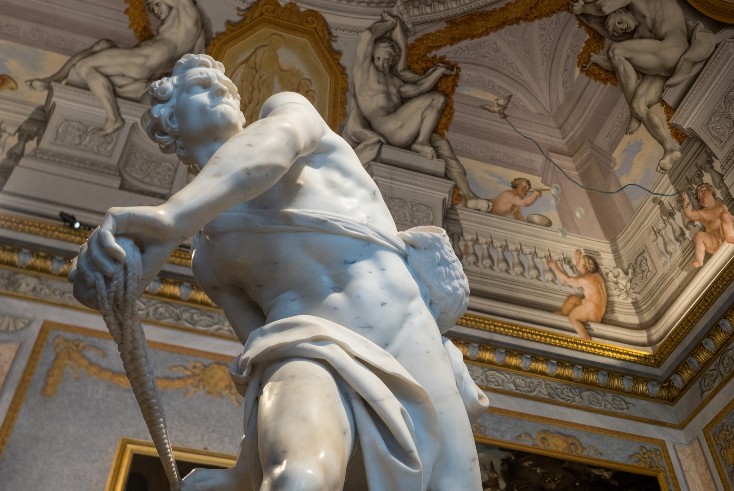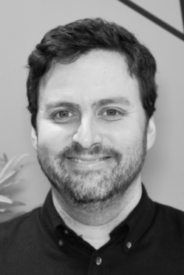David and the Goliaths of media: what can we learn from each other?

Opinion: Strategy Leaders
Davids are disruptive and agile; Goliaths can crowdsource insights, provide stronger measurement, and bet big on traditional advertising.
Disruption and change historically gives way to innovation and new ways of doing things. Larger companies pivot and try to address the changes, whilst young hungry upstart enter the competitive arena with their finely tuned angle.
From personal experience, I feel part of this disruptive zeitgeist. I was very honoured to be inducted into the The Media Leader’s inaugural Future 100, class of 2022. It gives me a fleeting sense that the model of my own consultancy and the work that I regularly speak of carries some kind of weight and provides some interest to future facing marketing, advertising and media folk.
Media by the Davids, in a world of Goliaths. It has got me thinking.
There is a very well-entrenched narrative in the brand world of smaller upstarts growing, provoking and disrupting the large. And although being very much in the former segment, I like to think there is more to it than this whole ‘little beats big up’.
Yes, us Davids do have some advantages over the Goliaths
Sometimes it is great being nimble, small and dynamic. For example I (a David) can deliver media strategies, sometimes on behalf of larger agencies, from my desk in Lincoln or a coffee shop in Bath to clients in London or Texas.
Davids also excel in the advent of digital skills and digital media. TikTok creation is not the preserve of the behemoths; creativity comes from all corners. When bidding on a click on a Facebook, Pinterest, Reddit or LinkedIn platform, it does not matter whether you are a newbie on a laptop somewhere in the world or on your London agency floor. A dollar is a dollar that does not discriminate. Plus, smaller players and freelancers who are not hampered by investment deals and spend commitments can arguably deliver objectively better digital plans than their giant counterparts.
A lot has been said too about diversity & inclusion in the media industry this year, as targets are being eeked towards yet somehow not yet fulfilled. I wrote about this over-promotion and virtue signalling before that many agencies are guilty of, by endorsing their DE&I creds without much follow through.
From where I am sat, smaller companies are more agile, can enable greater change and inclusion in their workplaces (if indeed they have a workplace) and typically are more open to tapping into remote talent, removing the barriers of geography (and oftentimes the London barriers of social mobility) and enabling those with hidden or visible disabilities to also thrive.
Finally here, I feel the David advantage when working with small businesses as clients. There is a kinship between working with founder-led businesses and smaller media agencies/planning shops. There is less blockage, fewer silos, and I feel it is easier to land on a mutually agreeable strategy that connects to the business goals as well. Therefore, the agency-client relationship is arguably stronger.
But Goliaths, you teach us so much
Although I personally love running a small business and not working for a bigger Goliath anymore, I also see the value and have absolutely benefitted from my experiences with such larger companies.
Firstly, process. Founder-led businesses sometimes have the frustrating ability to knee-jerk their way through decisions, turn a plan on its head and resort to lazy or easy-to-do performance media.
I personally aim to utilise my experiences in larger agencies (e.g., principles of roadmaps and gating) to calm them down, to help them jog before they run. If I had only worked for Davids, I would perhaps know no different, and get caught in the whirlwind.
At larger firms, the number of exceptional smarts and talented people, both in larger agency/client side and with the vendors, enables crowdsourcing of ideas. Yes, in many worlds too many cooks can spoil the broth, but when solving big problems, Goliaths can lean on some of the best specialist thinking in analytics, digital, strategy and anecdotal cross-client experience. That can makes for sensational output.
Another thing that bigger agencies and brands win at is measurement. It is an ongoing debate, but Goliaths think nothing on dropping £50k on an econometrics project, something which is unthinkable to David, who has more rudimentary measures and at best some marketing mix modelling to complement their default attribution settings.
The big reason this measurement challenge matters is the braver through-the-line media investment decisions can be made. Bigger brands will make informed bets on TV, radio and outdoor, whilst Davids sometimes have reticence leaving their heartland of biddable, predictable and short-term-ROAS-driving performance media.
Therefore, empowered advertisers informed by econometric data invest in brand advertising, which increases their share of voice and therefore market. Goliath wins!
To add further salt into David’s wounds are the economies of scale derived from traditional media buys. Where David can win and be as effective (if not more so) on a digital activation or creative standpoint, Goliath buys more TV and more scale media. And typically better-secured CPMs (which are expected to continue to drop next year) will continue to exacerbate a potential big brand/little brand gap.
So how can David and Goliath help each other?
As a David, I have my perks, my agility and my things I can tap into that I do not need the big ones for. But if I lean into Goliaths’ thirst for first-things-first, crowdsourcing insights, stronger measurement and bigger bets on traditional advertising I can probably take on the bigger guys more.
Goliath, you big old philistine giant, perhaps lean into the agility of the Davids out there, tap into more inclusive and non geo-restricted talent, foster those direct closer relationships and perhaps think about the no-nonsense acerbic work that can come out of those.
Its less versus, more and. Learn off and embrace each other for ultimately better output and media results.
 Simon Akers is a marketing consultant, media strategist, and founder of Archmon, a performance and marketing consultancy.
Simon Akers is a marketing consultant, media strategist, and founder of Archmon, a performance and marketing consultancy.
Strategy Leaders features on the Thursday edition of The Media Leader‘s daily bulletin with thought leadership, news and analysis dedicated to excellence in commercial media strategy.
Sign up for free to ensure you stay up to date.



